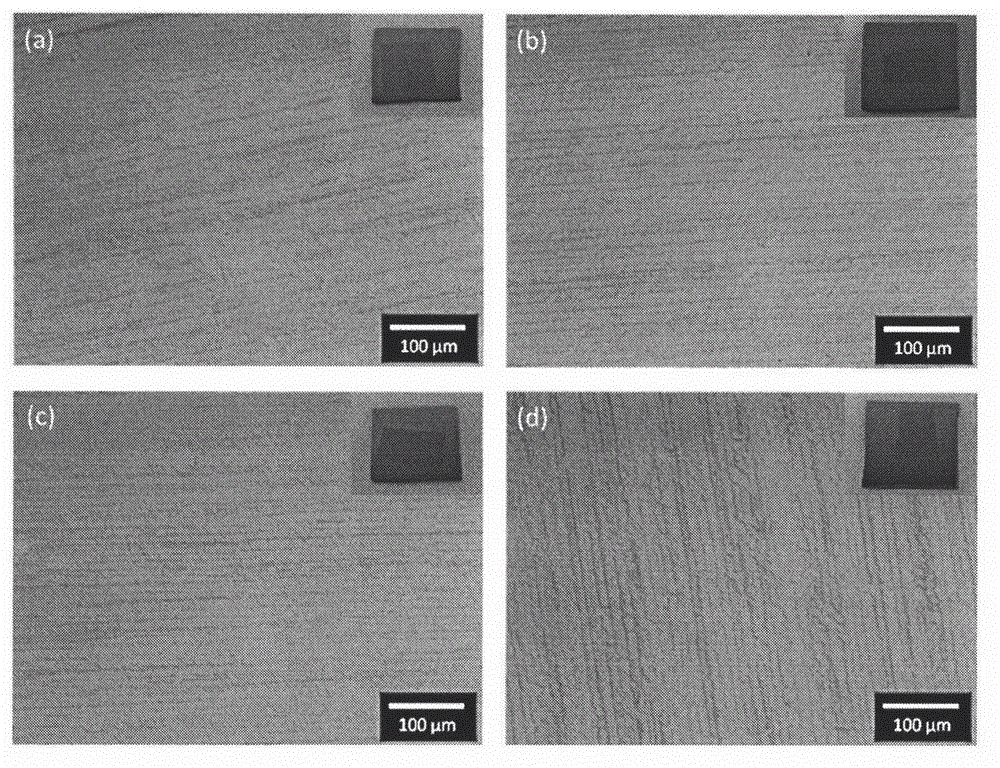Graphene thin film transferring method based on physical adsorption
A graphene film and physical adsorption technology, applied in the field of materials, can solve the problems of complex transfer process, long transfer process, and unstable process, and achieve the effects of reducing environmental pollution, rapid transfer process, and avoiding glue residue
- Summary
- Abstract
- Description
- Claims
- Application Information
AI Technical Summary
Problems solved by technology
Method used
Image
Examples
Embodiment 1
[0029] Transferring graphene on a metallic copper substrate to a 300nm thick SiO 2 layer on the Si wafer, including the following steps:
[0030] (1) Utilize the glass flake to process the copper foil with graphene thin film to be smooth;
[0031] (2) Attach the PET-silica gel layer to the copper foil;
[0032] (3) Put PET-silica gel / graphene / copper foil into FeCl with a concentration of 1mol / L 3 In the aqueous solution, soak for 1 hour to completely remove the metal copper and leave the PET-silica gel / graphene structure;
[0033] (4) Soak in 10% hydrochloric acid solution for half an hour, clean the PET-silica gel / graphene structure with deionized water, and dry it with nitrogen;
[0034] (5) Attach PET-silica gel / graphene structure to Si0 2 / Si chip;
[0035] (6) After sticking, lift the PET-silica gel layer to get SiO 2 / Si-based graphene.
[0036] figure 2 This is the optical microscopic image and atomic force scanning image after transfer. During the transfer pro...
Embodiment 2
[0038] Multiple use of PET-silica gel layers to transfer graphene on metallic copper substrates to SiO with a thickness of 300 nm 2 layer on the Si wafer,
[0039] The specific steps are similar to Example 1, but after completing all the steps of Example 1 once, use the PET-silica gel layer peeled off in step (6) to continue to repeat the process of Example 1, so that it is repeated 4 times, that is, using a piece of PET -Silicone layer achieves 4 transfers, image 3 It is an optical microscopic image of the four transfer results, comparing the four results, and verifying that the multiple transfer of graphene can be achieved by using the PET-silica gel structure.
Embodiment 3
[0041] transfer graphene on metallic copper substrate to PDMS substrate,
[0042] The specific steps are similar to those in Example 1, but the target substrate used is a PDMS substrate.
PUM
| Property | Measurement | Unit |
|---|---|---|
| thickness | aaaaa | aaaaa |
| thickness | aaaaa | aaaaa |
| thickness | aaaaa | aaaaa |
Abstract
Description
Claims
Application Information
 Login to View More
Login to View More - R&D
- Intellectual Property
- Life Sciences
- Materials
- Tech Scout
- Unparalleled Data Quality
- Higher Quality Content
- 60% Fewer Hallucinations
Browse by: Latest US Patents, China's latest patents, Technical Efficacy Thesaurus, Application Domain, Technology Topic, Popular Technical Reports.
© 2025 PatSnap. All rights reserved.Legal|Privacy policy|Modern Slavery Act Transparency Statement|Sitemap|About US| Contact US: help@patsnap.com



